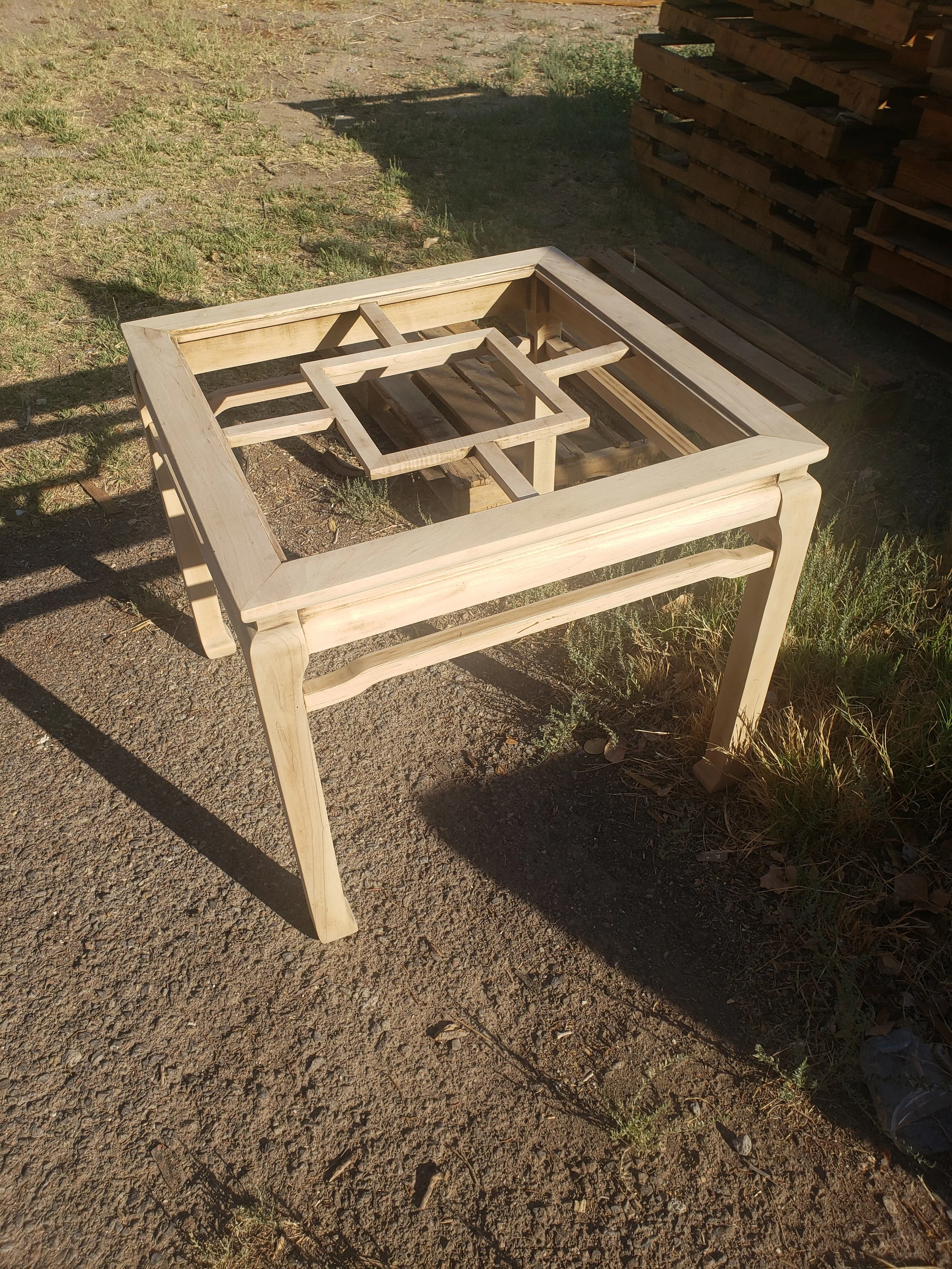To Strip or NOT To Strip?
These Asian-inspired tables were my first attempt at stripping off old finish. Wow! What a challenge. These tables were so difficult because of all of the angles. I ended up having to sand off the majority of the old finish and it was very time consuming. These tables have it all: curves, tight angles, hidden surfaces that were hard to get to, and many years of waxy build-up. I have learned so much since this project - about cleaning, sanding and stripping - that would have been invaluable at the time.
Before attempting to sand or strip, I watched several videos on stripping furniture. It looked easy enough! Ha! I think I needed to watch a lot more. First of all, I learned that the instructions on the stripper do not necessarily work for every piece in any environment. I applied the stripper to the table and waited several hours before attempting to scrape off the excess. The first two pictures above are after that process. You can see that there is a lot of finish left. Not only did it not take off the finish, but cleaning the stripper off of the table was very difficult. I would not advise using stripper on a piece of furniture unless it is a flat surface, such as the top of a dresser.
*Learning point - after watching more videos, I learned that it works better if you apply the stripper and then cover it in plastic wrap and leave on 24 hours. The brand of stripper also matters so find one that works for you.
Suffice it to say, I gave up on stripping and began sanding. The two bottom pictures are the tables after completing the sanding process. They were now ready to stain. I ended up using a water-based stain in American Walnut for the lighter color and a Dark Walnut for the darker. I will discuss different types of stains in another post.





